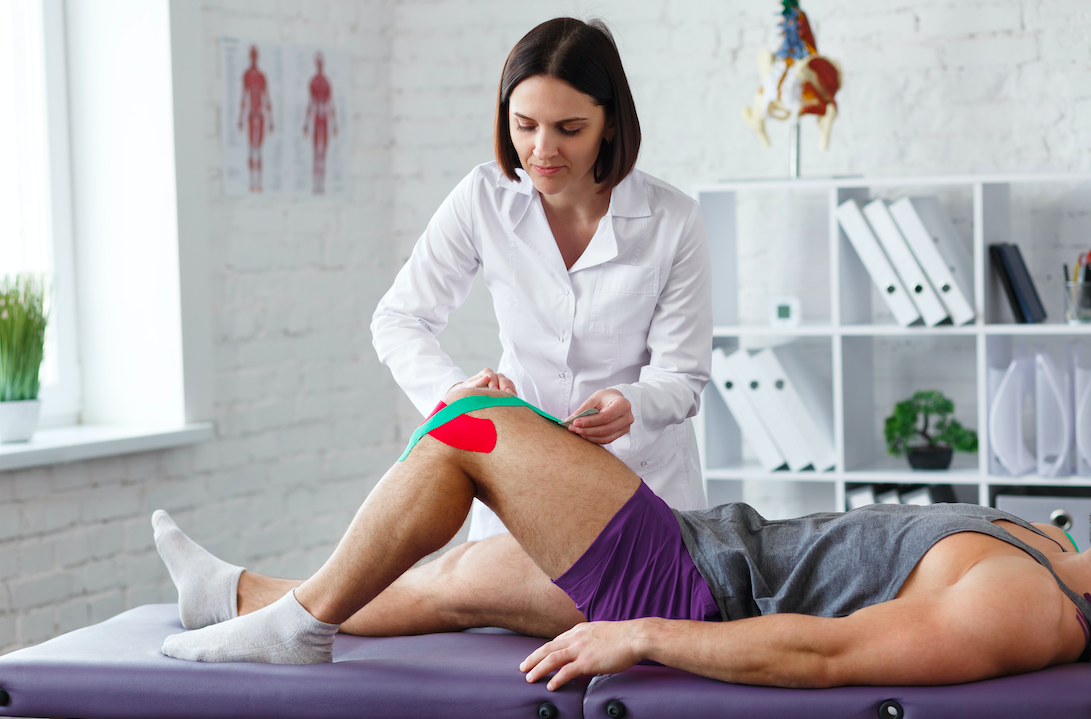Blog
Assistive devices can help with mobility when pain is slowing you down

Knee pain is extremely common in the general population, and it can manifest through a number of conditions. If you’re personally dealing with knee pain right now, you may also be seeking outside solutions that will allow you to get around more easily. For those of you who fall into this category, one great option that can help for many causes of knee pain is an assistive device.
Assistive devices include canes, walkers, crutches, tape, braces, and other orthotic devices. While each of these has a different indication, they are all prescribed for the same general goal: make mobility easier. Below, we take a look at some of the most commonly used assistive devices for knee pain and how to use them properly.
Patellofemoral brace
- A knee brace may be recommended for patients with patellofemoral pain syndrome, or runner’s knee, a painful condition that is particularly common in runners and other active individuals
- A patellofemoral brace can help to alleviate the symptoms of runner’s knee (ie, pain around the front or along the edges of the patella that gets worse with certain types of activity or sitting), which will in turn allow for greater range of motion and more mobility in activities that involve the knee
- Patellofemoral braces accomplish this by providing extra support and compression for the knee, particularly by stabilizing the kneecap (patella) and allowing it to glide more smoothly on the thighbone (femur) while redistributing pressure away from the painful area to stronger regions of the knee
- Knee braces are available in a variety of sizes and styles, including basic bands, straps, compression sleeves, and wraparound braces for mild to moderate pain; for more severe pain, a hinged or customized brace may be considered
- If your doctor or physical therapist recommends a patellofemoral brace, they will explain how to put it on and whether it should be worn all the time or only when you are physically active; be sure to monitor if your brace moves during activity, which can be a sign of improper fit
Knee taping
- Taping the knee is a technique frequently used by physical therapists for a variety of conditions that cause knee pain, including runner’s knee, patellar tendinopathy (jumper’s knee), instability of the patella, and knee osteoarthritis
- Knee taping follows the same principles of knee bracing, as it is intended to provide additional support to the knee and realign the patella, thereby alleviating pain and improving knee function
- While a physical therapist is usually responsible for taping the knee, they can also teach you to do it yourself, so you can better manage your condition
- The taping technique performed depends on which condition is present, but one of the more commonly used approaches is called McConnell taping, or patellar taping, in which a rigid tape is applied across the patella, from the outside to the inside; other techniques include tendinopathy taping and Mulligan taping
Single point cane
- For patients with severe knee pain and those who are recovering from surgeries like ACL reconstruction or a knee joint replacement, assistive devices like a single point cane, front wheel walker, or crutches may be needed
- Older adults with balance issues and knee pain interfering with their ability to walk normally are also candidates for these assistive devices
- A single point cane helps to redistribute a patient’s weight from a lower extremity that is weak or painful to the cane; they also improve stability by increasing the patient’s base of support, and provide important information about the ground that will allow the individual to navigate it more effectively
- Canes should always be held with the top of the handle at your wrist in the hand opposite of the painful side; this means that if your left knee is painful, hold your cane in the right hand and advance it forward when your left leg steps forward
- The same concept applies to stairs: walk up with the cane and the good leg, and down with the cane and the bad leg
Front wheel walker
- A front wheel walker may be prescribed for patients recovering from a complete knee replacement, as the knee will be swollen and painful during the first few weeks after the procedure
- Walkers help these patients by providing a stable platform for walking that will prevent falls and aid their recovery by reducing the amount of weight and stress on the knees
- When using a front wheel walker, be sure to keep the front of your body in line with the back two posts of the walker; advance the walker a few inches in front of you first, and make sure all tips and wheels are touching the ground before taking a step
- When you’re ready to take a step, step forward with your bad leg first, followed by your good leg, placing it in front of your lead foot

